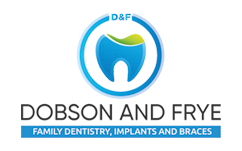UNDERSTANDING PARTIAL DENTURES
Some people lose a tooth due to an accident, an ailment, or because they didn’t take good care of their teeth. If this has happened to you, you might feel embarrassed about not having all your teeth. We have a variety of Restorative dentistry treatments to solve the problem of missing teeth, including bridges and dentures. In addition, partial sets or complete sets (traditional dentures) can be used.
We offer a variety of restorative dentistry treatments to solve the problem of missing teeth, including bridges and dentures. In addition, partial sets or complete sets (traditional dentures) can be used. Partial dentures help prevent the neighboring teeth from shifting on the space left by your missing teeth, alleviating excessive stress from your jaw.
If you’re still unsure which treatment is best for you, partial and complete dentures have different benefits. Below, we’ll look at the pros and cons of each to help you make an informed decision.
COMPARING PARTIAL WITH FULL DENTURES
If you’re still unsure which treatment is best for you, partial and complete dentures have different benefits. Below, we’ll look at the pros and cons of each to help you make an informed decision.
- Complete dentures are necessary when most of a patient’s teeth are missing. Partial dentures can replace one or more missing teeth in a jaw.
- Partial dentures can be used to prevent other teeth from getting extracted. Complete sets will need all the remaining teeth to be removed.
- There are two types of partial dentures: fixed and removable. A fixed partial denture, also known as a dental bridge, is supported by implants and is called an implant-supported bridge. Most removable partial dentures are traditional.
- Partial dentures are less expensive than complete dentures. Also, the cost of removing teeth is already figured into the price of a complete set of dentures, but partials often don’t require extraction.
- Partial dentures are more stable than traditional ones, as they’re supported by both the adjacent natural teeth, soft tissues, and jawbone. Traditional dentures rely solely on these soft tissues and bone for retention.
TYPES OF PARTIAL DENTURES IN AZ
- Cast Metal Removable: Cast partial dentures are the most common type of removable partial dentures because they are strong and very durable. These are attached to the support teeth using metallic wire clasps. There are more aesthetic attachments available, but there is often more expensive. Cast metal partial dentures can last many years with proper care and maintenance.
- Acrylic Removable: Acrylic removable or flipper dentures are the cheapest kind of partial dentures. They offer a less-expensive alternative to fixed partial dentures, but like all removable dental appliances, they’re also less stable and less secure than other kinds of partial dentures. Acrylic removable dentures are attached to your existing teeth with metal clasps that you can see when you smile or talk.
- Flexible: Flexible dentures are ideal for those uncomfortable with rigid bases or cast metal acrylics. The base is a thin and heat-sensitive nylon material, while the clasps are made of gum-colored wires that can fit into areas of your existing teeth. This means that flexible dentures are very comfortable, and they look very natural too.
- Fixed Bridge: Fixed bridges make an excellent option for replacing one or two missing teeth. A fixed bridge has artificial teeth attached to crowns that fit into the healthy surrounding teeth for support. It must be trimmed so that the crowns fit into the tooth spaces. Because it is permanent and durable, a fixed bridge acts like a natural tooth and needs to be cleaned regularly like a natural tooth. Maryland bridges are another alternative, but they’re less attractive than fixed bridges. All of this applies to front teeth; at the back, there are other options available: one side can have a bridge supported by pontic “rods” (the dental term for “pickers”) that are cemented into place on either side of the gap, or you can have a “cantilever bridge,” which is supported by one tooth on either side of the gap.
- Implant-Supported Fixed Bridge: Implant-supported bridges require no damage to existing teeth. The implant is secured to the jawbone, which acts as a natural root. Implants are not limited to two or three; with sufficient numbers of implants, full-arch or mouth restorations can be achieved. More implants may be needed for the lower jaw than the upper jaw. Implant-supported bridges are permanent and free of diet limitations of conventional false teeth.






